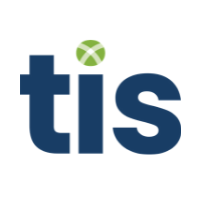5 solutions how Treasury can add value to the company as a cost center.
30-05-2022 | Zhanna Irgaliyeva | treasuryXL | LinkedIn |
Treasury can act as a profit or a cost center in an organization. Usually, the treasury department is considered the cost center of the business as it is in charge of keeping costs in check and below budget. However, the revenues and profits contributed by treasury in a cost center will not result directly result in profit within the organization.

What is the Difference between a Cost vs Profit center?
The main function of treasury as a cost center is being responsible for reporting the cost processes of the company, and keeping these costs as low as possible. The difference with treasury as a profit center, is that it thinks more strategically with the goal of increasing profits rather than cutting expenses. Nowadays, only those companies that manage to earn direct profit from a trade or risk management can classify treasury as a profit center.
Value of Treasury being a cost center
Despite this fact, treasury can make a meaningful contribution by capturing indirect profits and providing additional value to companies. Let’s look at five solutions by which treasury as a cost center can make a meaningful contribution.
- Money markets
If a treasurer is limited in his time to invest in free funds, then Money Market instruments can be a very suitable solution, as they are highly liquid and can be used to make additional profits for a period of less than a year. The treasurer can choose which instrument is more profitable and appropriate, taking into account the current position of the company, the number of funds available and the location.
- Risk Management
Key treasury decisions on Risk Management are a second way to bring additional value to the business. Implementation of policies and limitations is the first step for limiting, controlling, and reporting requirements. To avoid various risks in operational areas and maintain strict controls, treasury can be centralized. For managing financial market fluctuations treasury uses hedging which includes forwards, futures, and options with the aim of reducing or eliminating risks of changing interest rates, FX, commodity prices and also efficiently save funds.
- Accurate forecasting
Collecting the required data and setting up processes for accurate forecasting can not only safeguard the company’s funds and carefully plan its cash, but can also be used to predict future losses and find future cost-effective solutions. Fixed or variable costs can be revised to find the best opportunity for the company’s activity.
- Fintech Solutions
The rapidly increasing Fintech solutions are becoming even more popular in the world of treasury, which offers financial services the possibility to act as a link between providers and customers. Currently, the main areas of Fintech solutions are:
- Digital lending > The online disbursal of loans can generate significant growth in the current lending market,
- Payments > The automation of account payable processes, electronic invoicing, and cross-border payments lead to the shortening of CCC and reducing bank fees.
- Blockchain > This system of decentralized, distributed digital ledger (database) consisting of digital records called blocks, can influence cash management. It provides the option to reduce the speed of transaction settlement, leading to cost-saving and increasing the effectiveness of cash management.
- Digital wealth management > The use of robot advisers can lead to effective money management.
- Transfer Pricing
Intercompany transactions (such as loans, funding, leasing, guarantees, interest rates, or FX) can influence the company’s profits and impact on its cash flow and cash position. Therefore, treasurers should carefully check and understand how transfer pricing should be applied in the company taking into account local laws. Treasury activities can affect the company’s tax revenue, therefore, a proper transfer pricing policy with the treasury will help. Best practices are important for the company’s activity.
Conclusion
All of these treasury cost center activities are to secure the money that was earned directly and provide the company with indirect revenues or cut expenses. So, even if treasury is a cost center, it can be of great value to the company and improve solid profits. Of course, this can only happen when the process is managed by a proper treasury professional.
Thank you for reading!
Zhanna Irgaliyeva
What could be the best solution for your company? Feel free to contact treasuryXL for professional treasury guidance!
Treasury Manager, CTP
References:
https://www.investopedia.com/terms/c/cost-center.asp
https://openlink.com/en/insights/articles/turning-treasury-into-a-profit-center/
Essentials of Treasury Management, 6th Edition
https://www.treasurers.org/transferpricing


















.png?width=1200&upscale=true&name=Group%2056%20(1).png)






